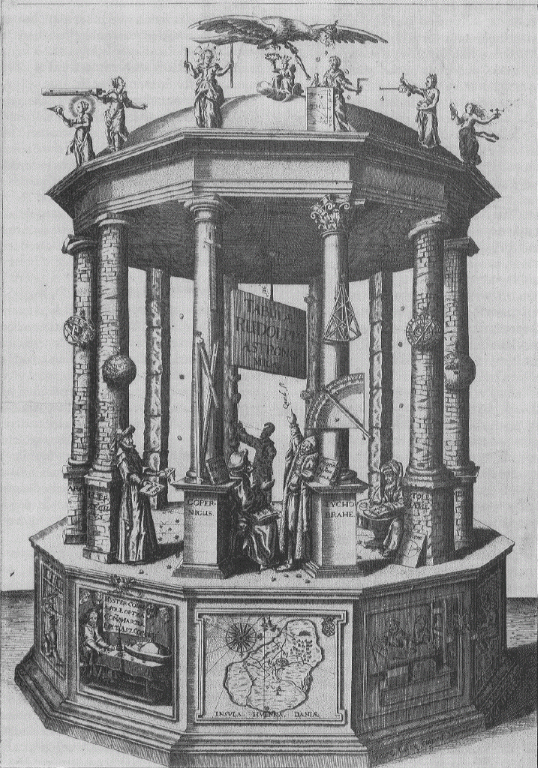

Frontispiece of the Rudolphine Tables of planetary positions, published by Kepler in 1627 in Ulm and dedicated to Tycho's and Kepler's deceased patron, Rudolph II. The frontispiece is an allegoric depiction of the Temple of Astronomy. Taking center stage are Copernicus and Tycho , while Hipparchus and Ptolemy look on. The central panel on the base is a map of the island of Hveen. The panel to the left shows Kepler himself, laboring by candlelight.
The Rudolphine Tables were the first to make use of Kepler's newly formulated Laws on planetary motions, calibrated using Tycho's store of accurate planetary observations. They received a spectacular validation on November 7, 1631, when the French philosopher and sometimes astronomer Pierre Gassendi (1592-1655) observed a transit of Mercury across the solar disk, as predicted by Kepler. Kepler's prediction of this event was far more accurate than those based on the Copernican Tables. This success paved the way for the general acceptance not only of the Rudolphine Tables, but also by extension, of Kepler's three Laws of planetary motions.
| Chronological menu | Biographical index | Index of images |
-Written and last revised 20 December 1997 by paulchar@ucar.edu.